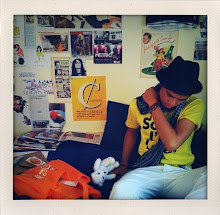This article by Faigley of the University of Texas at Austin is clearly a bit dated as it was published more than a decade ago. This is evident because his concern about the coexistence of prose and visual design in the same medium, the Internet, has already found a conclusion (for the most part). Discourse displayed on websites with visual aids blanketed all around it is the norm of this digital age and there doesn’t seem to be a problem. Sure, the expansion of authorship has definitely increased beyond measure with personal websites, blogs, and social networking, which has in turn allowed for the creation of a certain “Internet” speak that some may consider a deterioration of literate language. However, this is a mere effect (or perhaps casualty?) of the culture that technology has spawned. But despite the jungle of “LOL’s”, prose can still be found intact in many parts of this networked Wild West, often with the accompaniment of multimedia. Sounds, pictures, movies, and more have since enhanced audiences’ overall experiences, allowing for supplementary material. There may be an over-reliance on other mediums being spread and not enough emphasis on text, but for over a decade since this published article, it seems as though discourse may be bullied, but never expelled entirely.
Not to be a smug, self-referential author, but doesn't this post, this blog, with its scholarly text and visuals, serve to dispel the literary concern? O btw, brb.
Not to be a smug, self-referential author, but doesn't this post, this blog, with its scholarly text and visuals, serve to dispel the literary concern? O btw, brb.








